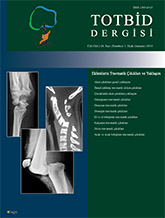
Sensitivity to metals is very common, especially to nickel. Implanted metals corrode when in contact with biological fluids and release metallic ions of iron, chromium, nickel, aluminum, molybdenum etc. These metal ions may cause local or systemic effects and induce hypersensitivity reactions. Cutaneous reactions over the implanted device are primarily T-cell mediated type 4 delayed-type reactions. Patch test evaluation is the gold standard for searching metal hypersensitivity. Routine pre-implant patch testing is not recommended; it should be performed before operation if the patient has a personal metal allergy history. Currently available testing methods cannot predict which patients will develop hypersensitivity reactions following insertion of metallic implants. Metal hypersensitivity is an important problem in orthopedics, because of its potential role in formation of pseudotumors, chronic pain, joint effusion, and also prosthetic joint failure and need for revision.